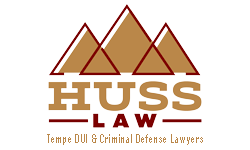
11|2022
Can a criminal trial proceed without a victim? There is a misconception the State must dismiss the case without victim appearance. Indeed, there are some circumstances the State may proceed to trial and obtain a conviction without a victim’s appearance. However, the dismissal decision depends on the applicability of the rules of evidence and Confrontation Clause. Specifically, if the State has 911 calls and spontaneous victim statements unresponsive to questioning, it could proceed to trial. Additionally, the State may proceed to trial without the victim by using eyewitnesses or other admissible circumstantial evidence. It is the State’s decision whether to proceed to trial without victim testimony. However, the decision must comply with the rules of evidence. These issues often come up in domestic violence trials. It is important to retain an experienced Arizona domestic violence attorney to review these types of issues.
Use of Out of Court Statements if Victim Does Not Show Up at Trial
There are several circumstances the State may seek to obtain a conviction by introducing a victim’s out of court statement. A victim’s prior out of court statement at trial invokes hearsay and “Confrontation Clause” objections. However, as long as the State is able to (1) identify the statement falls within a valid hearsay exception and (2) show the statement was a cry for help and not made in anticipation of future litigation, those two objections will not generally preclude an out of court statement.
Out of Court Statements generally admissible
The law allows a judge to admit “out of court statements” at trial under certain circumstances. Specifically, “out of court” statements considered a “cry for help” are typically admissible. These statements are not “in anticipation of litigation” and generally considered reliable. Indeed, a person under the excitement of an incident spontaneously describing what occurred to an officer or witness is an example. Or, a person describing an incident as it is happening or crying for help on a 911 call are also examples. These statements are not typically made with an eye towards convicting someone. Rather, these statements are generally urgent cries for immediate assistance due to an active situation.
It is up to the trier of fact to assign how much weight to give the out of court statement at trial. A defense attorney, or prosecutor, should heavily scrutinize any out of court statement prior to introduction. If the statement lacks reliability, this should be identified and litigated prior to trial. Regardless, the trier of fact assigns weight. And, may have issue with a non-appearing witness statement as evidence to convict a person. Or, the out of court evidence is so convincing that it could result in a conviction. Each case is different and should be evaluated by the best Arizona domestic violence defense lawyer.
Out of Court Statements generally not admissible
Most “out of court” statements are not admissible if the victim does not show up at trial. This is why retaining a competent Arizona trial lawyer is a necessity. Both hearsay and the Confrontation Clause bars almost all statements unless the victim/witness physically appears at trial and testifies. These statements lack inherent reliability and are not considered a “cry for help”.
Indeed, these statements include “out of court” statements in response to police fact-finding during formal interviews.
There is a clear line between a person making statements to seek help versus a person responding to police investigatory questioning. The former situation typically occurs immediately upon a victim’s initial contact with police. The latter when the police have already heard these statements and is now investigating. These cases require a thorough analysis and only the best Arizona domestic violence attorney should be consulted and retained to identify these crucial issues.
Other Evidence if the Victim Does not Show Up at Trial
Can the State proceed solely on the testimony of an independent witness? Indeed, observations of actions a person makes are not hearsay. And statements made during the heat of an incident are typically admissible through one of many hearsay exceptions. The most common exceptions are the present sense impression or excited utterance. Depending on the circumstances, these hearsay. exceptions likely allow an independent witness to testify to what a victim said during an altercation.
Eyewitness testimony can be damaging and it has carried cases to convictions many times without victim testimony. However, a strong cross-examination on an eyewitness highlighting human error, along with motives and biases may be enough to create reasonable doubt. Indeed, this is dependent on the unique circumstances of each case. The trier of fact assigns how much weight to give any piece of evidence and typically does this through witness evaluation. Prior to proceeding to trial where a victim does not appear, one should evaluate risk and consider the admissibility “out of court” statements in light of all evidence the State will present.
Defendant’s Fault the Victim Does Not Appear
Evidence Rule 804(b)(6) allows an out of court statement if the defendant wrongfully caused the victim to not appear. This concept is the Forfeiture by Wrongdoing exception. The State invokes this when proof exists the defendant caused the victim to not appear. And had intent to silence the victim. The State may prove this up through documents or witness testimony in a mini-trial. A victim’s entire relevant statement is admissible under this theory, not just those that fit other hearsay exceptions. The admissibility bar is whether the State can prove a defendant caused the victim’s unavailability with the intent to silence. This is as simple as the State proving a defendant told a victim not to appear. Or, threatened a victim not to appear. Indeed, the conduct includes any intentional behavior preventing the person from appearing.
Other ramifications may include felony Tampering With a Witness or Influencing a Witness charges. However, the State merely having evidence meeting a hearsay exception does not mean it could prove a criminal charge. This is because the standard to show hearsay is a much lower bar than proof beyond a reasonable doubt.
Huss Law, PLLC as Arizona’s Best Domestic Violence Attorney
A person faces significant risk proceeding to trial. Any evidence introduced against a person creates jeopardy. It is important to consult with an experienced trial attorney to discuss all options. Moreover, one should not engage in any behavior that would suggest to a victim or witness not to appear. This evidence will likely be admissible anyway. And, a person runs the risk of felony witness tampering or influencing a witness. It is important a person know their rights and have an attorney knowledgeable in the rules of evidence. This may be the difference between a conviction and full acquittal. Jeremy L. Huss has been handling Arizona criminal trials for 20 years. He is a veteran trial attorney that is very knowledgeable in trial work and the rules of evidence. Call Huss Law Today for a Free Consultation!
